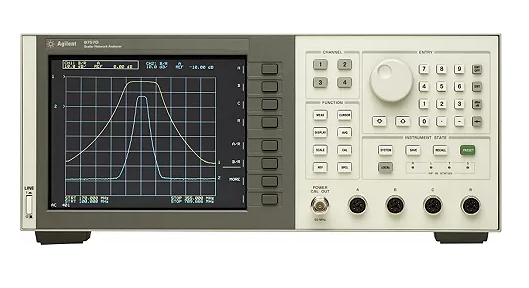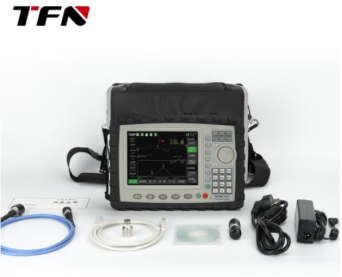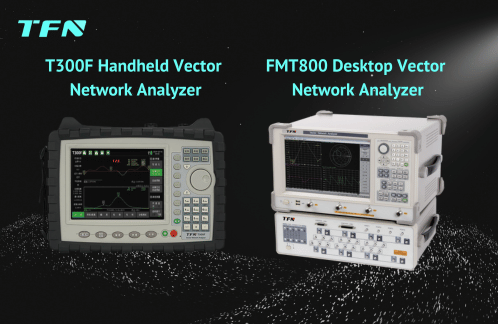Basic principles of Vector Network Analysis and the difference from Scalar Network Analysis
In today's world where electronic engineering and communication technology are changing with each passing day, network analysis technology plays a vital role as an important bridge connecting theory and practice. In the field of network analysis, vector network analysis and scalar network analysis are two very common and important analysis methods, but many people cannot distinguish the concepts of these two analysis methods, making it difficult to find suitable analysis instruments. This article helps you distinguish between these two analysis methods and helps you choose the right analysis instrument.
What are scalar networks and scalar network analysis?
Scalar networks are a network analysis method that is opposite to vector networks. They are mainly used to measure the amplitude characteristics of signals without caring about the phase information of signals. Scalar networks are usually used in the radio frequency (RF) and microwave fields, but their functions and application range are more limited than vector networks. Scalar networks only focus on the amplitude (or power) of signals and ignore the phase information of signals. For example, a signal can be expressed as: A = |A|, where |A| is the amplitude of the signal.
Scalar network analysis mainly measures scalar properties of the signal such as power, gain, and loss. It cannot provide phase information of the signal, so it cannot fully describe the transmission and reflection behavior of the signal. Scalar network analysis usually measures the following parameters:
1. Reflection loss: The reflected power loss of the signal at the input port.
2. Insertion loss: The power loss of the signal when it is transmitted from the input port to the output port.
3. Gain: The power amplification of the signal in the network.
Application scenarios of scalar network analysis and required test instruments
Due to its simplicity and low cost, scalar networks are suitable for the following scenarios:
1. Basic RF measurements: such as gain measurement of power amplifiers, insertion loss measurement of filters, etc.
2. Antenna testing: measuring the reflection loss of antennas (but unable to analyze the phase characteristics of antennas).
3. Low-cost test scenarios: When phase information is not required, scalar networks are an economical and practical choice.
Scalar Network Analyzer (SNA) is an instrument used for scalar network measurements. Its main functions include:
1. Measure the power, gain and loss of signals.
2. Analyze the reflection and transmission characteristics of the network, but only the amplitude information.

What are vector networks and vector network analysis?
Mainly used in radio frequency (RF), microwave engineering and communication fields. It uses vector form (amplitude and phase) to represent the transmission and reflection characteristics of signals, and is usually used to study the performance of transmission lines, antennas, filters, amplifiers and other devices in high-frequency circuits. The core of vector networks is based on the description of S parameters (scattering parameters). S parameters are a set of parameters used to characterize the transmission and reflection behavior of signals in RF and microwave networks, and are particularly suitable for the analysis of signals in high-frequency circuits. Compared with scalar networks, vector signals in high-frequency circuits are not only amplitude changes, but also phase changes, so vector networks describe the characteristics of signals in complex form (amplitude + phase).
For example, a signal can be expressed as:
A = |A|e^(jθ), where |A| is the amplitude and θ is the phase.
The measurement and analysis of S parameters (scattering parameters) are the core content of vector networks. S parameters describe the relationship between the input and output ports in the network, mainly including:
S11: reflection coefficient of the input port (the proportion of the incident signal reflected).
S21: Transmission coefficient from input port to output port (proportion of signal transmission).
S12: Transmission coefficient from output port to input port (reverse transmission).
S22: Reflection coefficient of output port.
In addition, vector networks can be extended to multi-port systems to describe the signal transmission and reflection behavior between multiple input and output ports. This is very important in complex RF systems.
Application scenarios of scalar network analysis and required test instruments
Compared with scalar networks, vector networks have a wider range of applications and more accurate analysis. They are mainly used in the following fields:
1. RF and microwave circuit design: analyze and optimize the performance of devices such as filters, amplifiers, and mixers.
2. Antenna design and testing: measure the input matching, gain, and directivity of antennas.
3. Communication system analysis: study the propagation characteristics of signals in transmission lines, waveguides, and other media.
4. Material property analysis: study the dielectric constant and permeability of materials by measuring reflection and transmission characteristics.
The vector network analyzer (VNA) is an instrument used to measure the characteristics of vector networks, which can accurately measure the amplitude and phase of signals. Its main functions include:
1. Measure S parameters.
2. Analyze the reflection and transmission characteristics of signals.
3. Evaluate the matching performance of devices (such as impedance matching).

Characteristics |
Scalar network |
Vector network |
Measurement content |
Measures only the amplitude of the signal |
Measure the amplitude and phase of the signal at the same time |
Parameter type |
Reflection loss, insertion loss, gain, etc. |
S parameters (S11, S21, S12, S22, etc.) |
Instrument complexity |
Simpler and lower cost |
More complex and expensive |
Application scenarios |
Basic power measurement and loss analysis |
Accurate RF and microwave network analysis |
Accuracy |
Low |
High |
Applicable frequency range |
Low to medium frequency |
Intermediate frequency to high frequency |
Scalar networks are suitable for simple RF measurement tasks, with low cost, but limited functions and unable to provide phase information. Vector networks are powerful and can fully analyze the amplitude and phase characteristics of signals. They are suitable for high-precision, high-frequency applications, but they are expensive. Combined with the ever-changing network environment, vector network analysis has gradually become mainstream.
TFN provides solutions for handheld vector network analyzers (T300F) and desktop vector network analyzers (FMT800). The handheld vector network analyzer has both vector network analysis and antenna and feeder line testing functions, and can more completely and accurately analyze the quality of antenna and feeder line communication systems; the desktop vector network analyzer is equipped with a multi-port tester, which provides efficient and flexible testing methods for the research and development and production of RF devices and components in industries such as wireless communications, radio and television, automotive electronics, semiconductors, and medical devices, effectively improving the testing efficiency of manufacturing companies and saving time and costs.

If you are interested in TFN vector network analyzer, please contact TFN sales team:
Email: info@tfngj.com
WhatsApp: +86-18765219251
Facebook: https://www.facebook.com/tfnfate/
